2006 August
About Andrew Cusack
 Writer, web designer, etc.; born in New York; educated in Argentina, Scotland, and South Africa; now based in London.
Writer, web designer, etc.; born in New York; educated in Argentina, Scotland, and South Africa; now based in London. read more
News
Blogs
Reviews & Periodicals
Arts & Design
World
France
Mitteleuropa
Knickerbockers
Argentina
The Levant
Africa
Cape of Good Hope
Netherlands
Scandinavia
Québec
India
Muscovy
Germany
Academica
The Neue Galerie

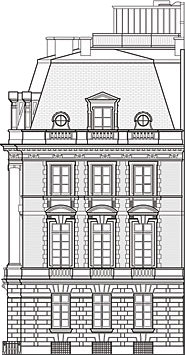 THE RECENT PURCHASE for the Neue Galerie of Gustav Klimt’s 1907 ‘Adele Bloch-Bauer I’ (above), alledgedly for a record-breaking price of $135,000,000, gives me the perfect opportunity to write a post on the eponymously recent addition to New York’s coterie of art museums. Since its 2001 opening, the Neue Galerie has resided in the handsome 1914 beaux-arts mansion on the corner of Fifth Avenue and 86th Street, designed by Carrère and Hastings (of New York Public Library fame) for industrialist William Starr Miller and later inhabited by Mrs. Cornelius Vanderbilt III. In the time since the construction of No. 1048, the rest of Fifth Avenue has undergone a lamentable transformation from a boulevard of beautiful townhouses and mansions to an avenue predominantly consisting of apartment buildings. While one appreciates the inoffensive design of the pre-war buildings on Fifth, there remain a number of thoroughly opprobrious modern interlopers which offend the graceful avenue. One can’t help but pine for Fifth Avenue before the mansions came down, but we can at least give thanks for holdouts like the Neue Galerie. (more…)
THE RECENT PURCHASE for the Neue Galerie of Gustav Klimt’s 1907 ‘Adele Bloch-Bauer I’ (above), alledgedly for a record-breaking price of $135,000,000, gives me the perfect opportunity to write a post on the eponymously recent addition to New York’s coterie of art museums. Since its 2001 opening, the Neue Galerie has resided in the handsome 1914 beaux-arts mansion on the corner of Fifth Avenue and 86th Street, designed by Carrère and Hastings (of New York Public Library fame) for industrialist William Starr Miller and later inhabited by Mrs. Cornelius Vanderbilt III. In the time since the construction of No. 1048, the rest of Fifth Avenue has undergone a lamentable transformation from a boulevard of beautiful townhouses and mansions to an avenue predominantly consisting of apartment buildings. While one appreciates the inoffensive design of the pre-war buildings on Fifth, there remain a number of thoroughly opprobrious modern interlopers which offend the graceful avenue. One can’t help but pine for Fifth Avenue before the mansions came down, but we can at least give thanks for holdouts like the Neue Galerie. (more…)
Champagne Loyalties

Abigail Hesser once asked me what champagne I preferred and I replied that I’m something of a fan of Veuve-Clicquot. “Veuve-Clicquot? I’ve never heard of it,” saith the Moet et Chandon partisan. Well now the young Miss Hesser (who in less than a year will be the young Mrs. Burke) has revealed herself as a convert to the Veuve cause. “Moet is trite,” she tersely says of her former poison of choice. I sent her a Veuve-Clicquot e-card welcoming her to Veuvianity.
The Red Lion Coffee Shoppe
Or: How Andrew Cusack Became a Tea Drinker
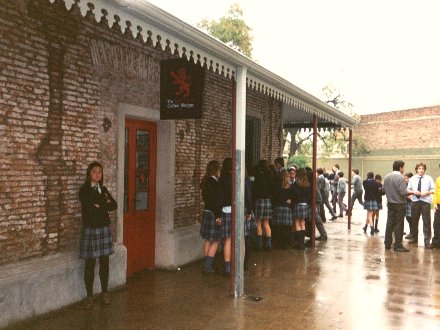
THE HOT SUMMER sun has fled us here in New York, having been replaced by the cooling but somber clouds of rain. My mind can’t help but harken back to an August of just a few years ago when I spent the summer in Argentina. Of course, New York’s summer is Buenos Aires’s winter, but in Argentina winter means prodigious rain and skies of grey, rather than the glorious snows we’re used to in the Big Apple. On the grounds of St. Alban’s College, our happy little school, there was situated the spartan but merry Red Lion Coffee Shoppe.
On many a cold, grey, Argentine August day we would escape the sufferings of education and flee to the Red Lion. There were two points of service at the Red Lion coffee shop: one a window which faced onto the outside (seen above), the other a hole-in-the wall counter which faced onto the little square room which was the shop. It was a simple, sparsely-decorated room with a few chairs and tables, the walls covered with posters lauding South African rugby and New Zealand cricket, and framed prints depicting charming views of other St Alban’s toponyms around the world: the original St. Alban’s in England, St. Alban’s in South Africa, St. Alban’s in Denmark, St. Alban’s just about everywhere. There was only one heater (the Argentines, in their desire to be in all ways like the British, do not heat their buildings properly) mounted onto the side wall opposite the counter and the obvious idea was to sit right next to the heater or else freeze. It was a black moment when one entered the Red Lion only to discover that others – the nerve! – were already situated by the heater. Rest assured, many a rueful glance was exchanged.
Anyhow, while a number of carbonated beverages were on offer, a nice warm cup of tea was much preferred to a cold, refrigerated soda. Tea at the Red Lion, which was invariably Green Hills, was accompanied by chocolate, usually fulfilled by a packet of M&M’s, but occasionally I went for Rhodesia bars which I confess I only ever bought because of their name. (Incidentally, I took a Rhodesia bar home and when I had a fetching young tutor at St Andrews who was one of the last Rhodesians to be born, I gave it to her as a gift at our last tutorial).
I had never been a regular tea drinker before then and am very glad that I acquired the happy habit; it is one which has stood me well throughout the ages. What better companion in Scotland, for example, while reading as the grey tempest of the Caledonian climate brews outside, than a nice cup of warm brew inside? And of course tea need not be a solitary joy. When I think of the hours wasted away in after-rosary cups of tea on weekday afternoons in St Andrews! It would bring scandal to some. Indeed one cold Scottish afternoon the hours of cups of tea gave way to two bottles of port, and then a raid by a gaggle of ne’erdowells on my secret whiskey reserve! (Duly recounted herein).
At any rate, I believe it to be one of summer’s chief deficiencies that it is too hot for the proper, frequent enjoyment of tea, and so I rather look forward to the coming fall and winter seasons. Nestled in a comfy chair with a nice cup of tea and a good book; could there be pleasures more sublime?
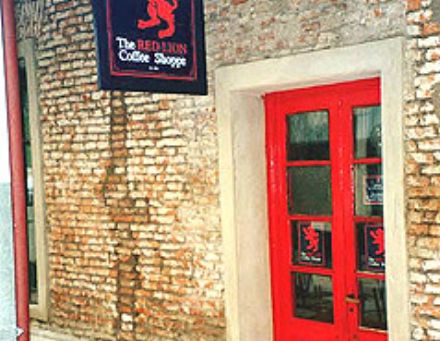
‘Villiers Prepares His Offensive’

Philippe de Villiers is preparing his campaign for the 2007 presidential election, Le Figaro recently reported, after having conducted an informal tour of holiday spots around France to bring his candidacy to vacationing voters. As the articles notes, one of the most important challenges for de Villiers and his Mouvement pour la France (MPF) is carving out a niche in the media for his campaign. Press coverage of the 2007 competition has portrayed the election as a showdown between the Socialist Party’s Ségolène Royal and the UMP’s Nicolas Sarkozy, a lack of fundamental differences between the two candidates on the major issues notwithstanding.
Despite a number of recent high-ranking defections to the MPF from the populist/nationalist Front National, the party which usually takes third place after the UMP and the Socialists, it’s unknown whether a significant portion of the Front‘s electoral base with follow through and vote for de Villiers instead of the FN’s Jean-Marie Le Pen. During last year’s referendum on the EU constitution, de Villiers swept the rug from under Le Pen’s feet by masterfully organizing the right wing of the successful ‘No’ campaign himself. If the Vendéen can repeat such a performance and seize the electoral momentum from the misanthropic FN leader, there’s a chance of both making it to the second electoral round and putting the ugly spectre of Le Penisme in its grave.

Le Figaro: Philippe de Villiers will carry out a tour of France this fall with MPF secretary-general Guillaume Peltier.
In an interview with le Figaro, the MPF’s second-in-command Guillaume Peltier proclaimed that “France needs a candidate who personifies the real Right and who will commit the country to a break with socialism”. When asked about the MPF’s policy on the impôt sur la fortune (ISF) tax on wealth, Peltier refreshingly replied “We propose its repeal, pure and simple”.
“The ISF strikes great fortunes less and less while striking middle-class homeowners more and more,” Peltier claimed. “Because of real estate prices are on fire, one finds farmers who do not even qualify to pay income tax who are stuck with the ISF. The UMP, with the capability for four years, has not done anything to end this unjust situation.”
And Europe? “Instead of an incomprehensible constitution, we propose a European charter on three points: 1) A truly European Europe, without Turkey; 2) A democratic Europe directed by the parliaments and by the peoples, and not by the technocrats of Brussels; and 3) A Europe of free cooperation against terrorism, drug trafficking, and organised crime.” The MPF would also support a referendum on whether to continue France’s participation in the Euro monetary union.
And finally, his prediction for 2007: “I consider that Philippe de Villiers will be in 2007 what the ‘Non’ was in 2005. Villiers is the only candidate of rural France, the candidate of the France of common sense. I’m persuaded he can make it to the second round. I see a Villiers/Royal run-off, the real Right against the real Left.”
Previously: On Walkabout with Philippe de Villiers
Gabriel García Moreno
Ecuador’s Saintly President
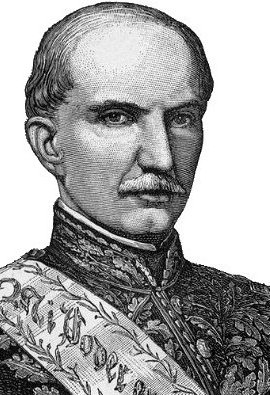
WE LIVE IN an age which is almost completely devoid of Christian statesmen. In their stead, we are today ruled by faceless bureaucrats and vapid masters of spin. Gentlemen once sought public office in the hopes of ensuring order and the public good while dark and knavish men sought the same in their lust for power. The politicians of today, meanwhile, tend to be of neither inspiration but rather seem all too often to have engaged upon the ‘career’ of ‘public servant’ because they lack any of the skills necessary to succeed in any real, productive employ, station, or vocation. Given the sad state of affairs in our day, we must look to the past — to another age and indeed another continent — in our search for models of Christian leadership in the temporal realm of a modern republic. In this search, the name of the journalist, scholar, statesman, and saint, President GABRIEL GARCÍA MORENO of Ecuador, stands taller than any other in the Americas. (more…)
The Farm Killings of South Africa
The above video is a ten-minute portion of a South African news programme exploring the brutal killings of innocent farmers in that country. It is most certainly worth watching, with the caveat that it’s not for the faint of heart. It is astonishing that people can live in such a climate of violence and fear. “But with the Lord’s strength, I’m here,” says one victim.
Even more appalling once you’ve watched that video is to watch the video below of South Africa’s Safety and Security Minister, Charles Nqakula, attacking those who complain about the rise in rape and murder. “They can continue to winge until they are blue in the face, they can continue to be as negative as they want to or they can simply leave this country.” It doesn’t take a genius to understand that the ‘they’ he speaks of is the community of white South Africans. Plus ça change, eh?
Further along the theme of South African online videos, why not watch the trailer for the upcoming film ‘Catch A Fire’? Soon to be released by Focus Features, the film tells the true story of Patrick Chamusso, a man brutally tortured by the police while falsely accused of terrorism. He is freed when they realize he is innocent, but soon makes up for his innocence by, you guessed it, becoming a terrorist.
Racialist Thinking Behind the Times
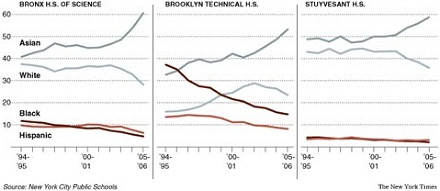
The fair-minded, independent observer would look at the figures above and think to himself “Interesting, the proportion of Asian students is on the rise, while that of White, Black, and Hispanic students is generally in decline”. However the racialists (I will not use the more loaded term of ‘racist’, though the meaning is exactly the same) at the New York Times can only see the Black and Hispanic decline, captioning the chart ‘The share of black and Hispanic students New York City’s three most elite specialized schools has declined’.
And why no chart depicting the racial make-up of the also public selective Hunter College High School? Is it, by some unknown criterion, not in the same league or perhaps the proportion of black and Hispanic students there actually rose? The Times reader is left uninformed as to the greater picture, but suitably inculcated in racialist thinking.
Gothamist’s Jen Chung notes the decline is “in spite of the city’s best efforts to encourage [Black and Hispanic students] to apply and attend” while City Councilman Robert Jackson ponders “”Is it institutional racism or is it something else?”.
Could it perhaps be that the racial makeup of the city’s elite public high schools is subject to (quel horreur!) occasional fluctuations? What is the racial makeup of an elite public high school “supposed” to be? Here’s a concept worth considering: how about giving the students in selective public high schools the best education on offer and admit students based purely on a meritocratic standard which does not descriminate by sex, race, class, or creed? Just a thought.
Two Scotsmen
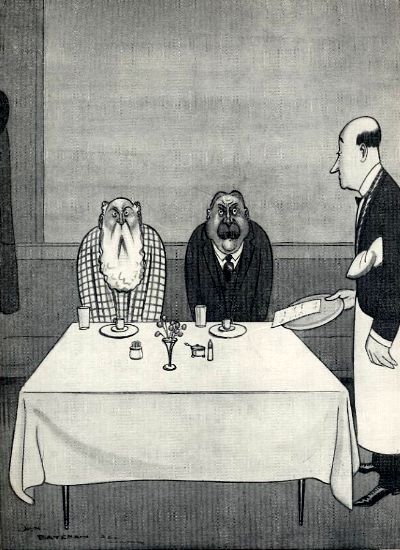
THE ORIGIN OF THE SLOW MOTION PICTURE
Study of two Scotsmen, having dined together, reaching for the bill.
H.M. Bateman
The Haunting Richardsonian
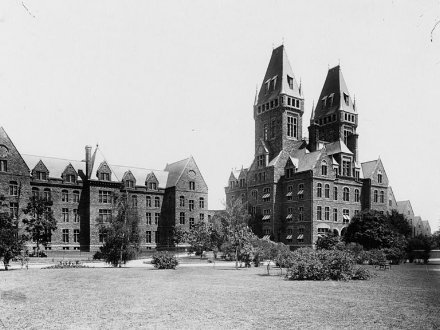
ONE OF THE splendid things about New York is that it’s a land which continually manages to throw up a surprise or two, even to time-hardened devotées of all things knickerbocker such as yours truly. One of my most recent discoveries is the fabulously haunting and impressive Buffalo State Hospital out in the far west of the Empire State.
The magnificent building was built to the design of Henry Hobson Richardson, the progenitor of the eponymous ‘Richardsonian Romanesque’ style, as one of a series of governmental asylums for the insane founded throughout the nineteenth century. Richardson also did a great deal of work on the Capitol in Albany, designing the south façade which, since the construction of Nelson Rockefeller’s Little Brasilia, is now the main façade of the building and was inspired by the Hôtel de Ville in Paris.
Construction on the State Hospital began in 1870, and the central administration block with its two towers and a number of flanking pavilions housing patients were opened in 1880. Interestingly, the towers which so dominate the building are purely decorative and remain unfinished on the interior.

The footprint of the building follows the V-shaped Kirkbride plan, conceived by Pennsylvania’s Dr. Thomas Story Kirkbride in his 1854 opus, On the Construction, Organization and General Arrangements of Hospitals for the Insane which revolutionized care for the mentally unstable in the nineteenth century. The location was a 100-acre parcel of property near the city of Buffalo, and the grounds were landscaped by Frederick Law Olmsted, who designed Central Park with Calvert Vaux.
The grounds originally included farms which helped to feed the patients and staff, but in the 1920’s this land was redeveloped as the Buffalo State College, now the University at Buffalo (State University of New York). The hospital, renamed Buffalo Psychiatric Center, moved out of the Richardsonian complex into a plain, ugly, modern building on the grounds in the 1960’s, leaving the beautiful Victorian structure to rot and ruin.
However recent efforts by Buffalo and New York state officials have led to the replacement of the roof and other work to ensure the continued integrity of the building. The latest plans would have the building serve an educational function under the auspices of the State University next door, an appropriate purpose for this majestic gem of New York architecture.
The Assumption

Nicolas Poussin, The Assumption of the Virgin
Oil on canvas, 22″ x 16″
1650, Musée du Louvre, Paris
Click here for a closer view.
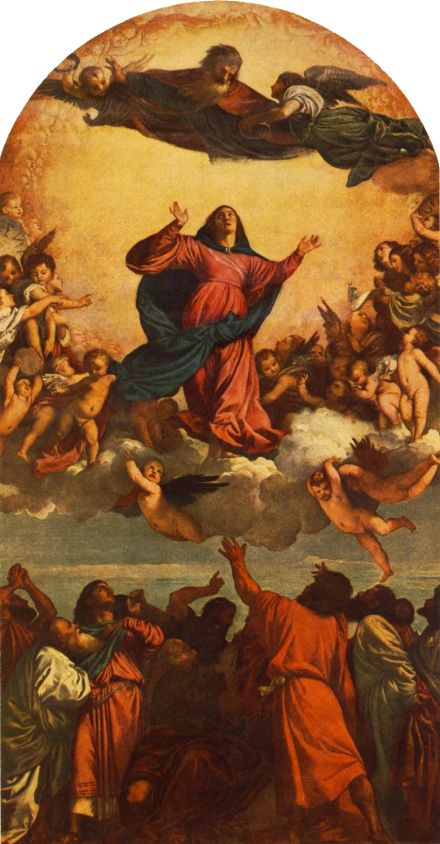
Titian, Assumption of the Virgin
Oil on wood, 272″ x 142″
1516-18, Santa Maria Gloriosa dei Frari, Venice
Peter Simple III
As the Anglo-American intervention in Mesopotamia took place, Peter Simple found he could not avoid the subject. In the first column we present to you today, Peter Simple tells us of another, more dangerous invasion. The second column was written after Defense Secretary Donald Rumsfeld brushed aside the Franco-German opposition to the Second Iraq War, chiding Paris and Berlin as ‘Old Europe’. Of course, the secularist modern republican governments which today rule from Paris and Berlin are about as far from Old Europe as possible, but read on. Peter Simple says it all.
Signs and Portents
January 17, 2003
 We are sometimes asked about our columnar policy in the matter of the proposed American war on Iraq. There is an ongoing discussion about this in the Supreme Columnar Council where the great abbots and nobles meet. They ask: what likely outcome could benefit or damage our columnar interests? Some say one thing, some another; there are as many opinions as men.
We are sometimes asked about our columnar policy in the matter of the proposed American war on Iraq. There is an ongoing discussion about this in the Supreme Columnar Council where the great abbots and nobles meet. They ask: what likely outcome could benefit or damage our columnar interests? Some say one thing, some another; there are as many opinions as men.
Of more immediate concern are rumours of incursions by agents of the American mass-culture, as it is called, into columnar territory. Last week there were reports that infiltrators, most likely seaborne invaders from the vast wastelands of television across the Interpaginal Channel, had appeared in a remote mountain region.
They had installed illegal electro-galvanic machines, distributed cheap “television sets” to a few gullible peasants and begun “broadcasting” seditious and obscene material.
This attempt to defy the fundamental columnar laws against technology did not last long. Sturdy, loyal peasants, wielding the infrangible iron bar of Luddite-Sibthorpian theory, soon smashed the evil machines and chased the interlopers over the border, chanting the old song: “Lift up the stones and expose the technological bandits to the eye of Heaven.”
In another attempt, infiltrators carrying large sums in columnar currency and Maria Theresa dollars, erected an infernal eating house and tried to sell their disgusting fare to the peasants. They even displayed an illicit electro-galvanic sign, “Simpleburgers”, to seduce the peasants from the homely, healthy fare they produce from their own immemorial labours in the fields.
When the victims fell ill from eating this unaccustomed rubbish, a traditional panic set in. Soon the more ignorant took to the roads, wheeling handcarts crammed with pathetic household goods: pots and pans, rocking chairs, bedsteads and icons, with here and there an ancestral grandfather clock, barometer or stringless harp handed down from forgotten bards of old.
A headlong rush towards the Dreaded Eastern Void was averted just in time by greybeard village elders and a few militiamen on leave who knew how to reinforce advice with rougher methods of persuasion. But now worrying supernatural phenomena were seen. A moderate-sized green dragon reading a newspaper was stretched out lazily by the roadside. A plague of frogs invaded a wayside shrine. From abandoned wells voices gave warning in unknown languages, immediately identified by village schoolmasters as “Hittite” or “Old Sorb” – there were few to argue.
Only by continual vigilance can we prevent such incursions, which, as the outer world grows ever more demented and corrupt, can only grow more frequent. What, it may be asked, are the implications for world and other world affairs? Our primary concern, as always, is to defend our borders and uphold our columnar interests. We cannot point out too often that in the event of a serious threat to the paginal balance of power, this column could not and would not stand idly by.
Gone for Ever
“Old Europe”: with this contemptuous phrase, Rumsfeld and his fellow eminences at the White House dismissed French and German opposition to military action against Iraq. Supremely arrogant, confident of a future world order even more repellent than the present, how should they know or care that for some of us Old Europeans the phrase can induce a mood of hopeless longing?
A hundred years ago, Old Europe ruled the world. From its colonies in every continent came tribute which daily enhanced its wealth, convenience and comfort. The old kingdoms and empires were still intact. The Kaiser ruled in Berlin, the Tsar in St Petersburg, the Emperor Franz-Joseph in Vienna, each with his splendid court whose customs and ceremonies seemed made to last for ever.
The civilisation of Europe – the greatest civilisation the world has known – still seemed secure. Its ancient cities, so varied in their beauty and splendour, still held glorious treasuries of art. Its noble landscapes were still unsullied. Its various peoples kept their own historical traditions.
But the death wish fell on Old Europe, and it collapsed in fratricidal war. The Americans arrived to hasten its ruin with their pernicious doctrines of self-determination, equality and perfectability. Mortally wounded, Old Europe staggered on, but could not recover.
Now there is talk of a New Europe. It is a matter not of emperors and kings but of technicians, accountants and businessmen. It may or may not prosper. What do we care, when Old Europe has gone for ever?
Avenida de Mayo, Buenos Aires
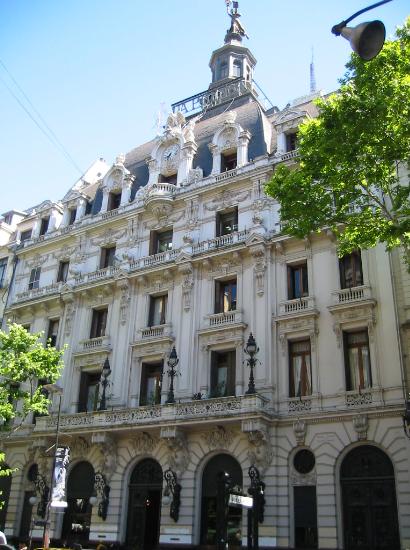
The La Prensa building, formerly home to the newspaper of that name, now the Casa de Cultura.
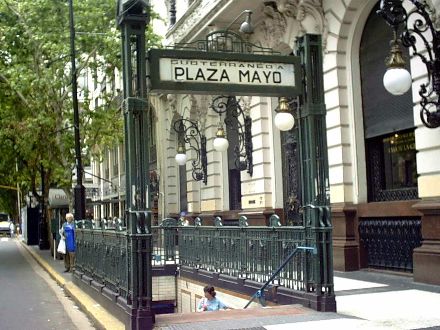
The subte entrance in front of the edificio La Prensa.
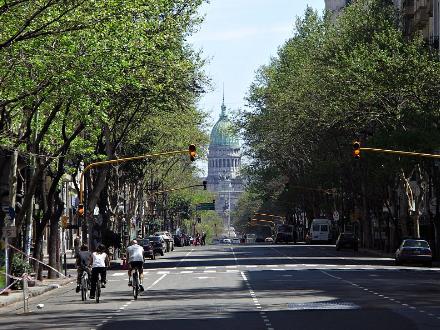
Looking down the Avenida toward the Palacio del Congreso.
On Walkabout with Philippe de Villiers

Viscount Philippe le Jolis de Villiers de Saintignon is the head of the French political party Mouvement pour la France, and one of the leading voices against the Islamisation of France. The MPF is, in some sense, the ‘Catholic’ party on the French right, being conservative and traditionalist in contrast to the Front National (headed by the genial misanthrope Jean-Marie le Pen), which is thoroughly republican and nationalist. De Villiers has been trying to encourage patriotism in contrast to the nationalism of the FN and the continentalism of the other parties.
A native of the Vendée, he led the right flank (so to speak) in the May 2005 French referendum against the European Constitution. The rejection of the Constitution by the French voters has put the nefarious project on hold, though likely not for long. (The established precedent with European treaties of this nature is for the ruling bureaucratic elite to hold as many referenda as it takes to pass). Let’s follow le bon vicomte and see what he’s up to these days…
The Great Seal of Carolina
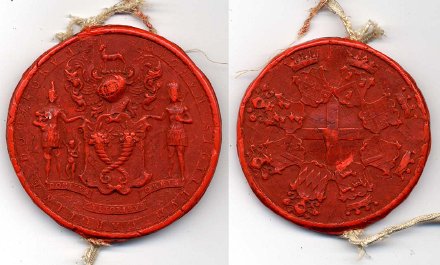
THE ROYAL CHARTER which erected the Province of Carolina created the colony as a county palatine, similar to Durham, Chester, and Lancashire back in England. However, instead of being ruled by a Count Palatine (or Prince-Bishop in Durham’s case), Carolina, named after England’s martyr-king Charles I, was to be ruled by eight Lords Proprietor, the eldest of which would hold the title of Lord Palatine of Carolina. The charter even allowed for the granting of titles…
…to Men well deserving the same Degrees to bear, and with such Titles to be Honoured and adorned, AND WHEREAS by our form of Government It was by our said Predecessor Established and Constituted, and is by us and our Heires and Successors for ever to be observed, That there be a certain Number of Landgraves and Cassiques who may be and are the perpetual and Hereditary Nobles and Peers of our said Province of Carolina, and to the End that above Rule and Order of Honor may be Established and Settled in our Said Province.
The granting of the titles of ‘landgrave’ and ‘cassique’ never really took off, but the Lords Proprietor did have a rather splendid Great Seal for their own private fiefdom in the New World, an impression of which is happily preserved by the good people of the South Carolina Department of Archives and History down in the Palmetto State.
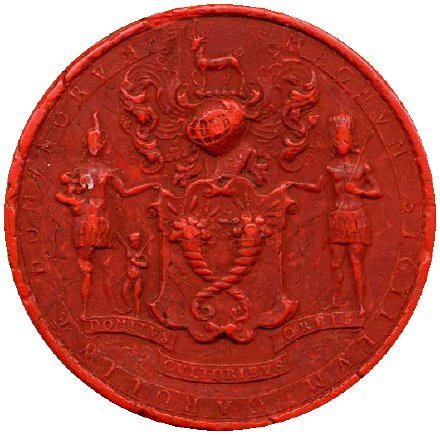
The obverse (above) shows the arms of the Province of Carolina with two cornucopias in saltire. Joseph McMillan, Director of Education for the American Heraldry Society, has posited that this is the probable origin of the cornucopia depicted in the Great Seal of the State of North Carolina, the larger of the two Carolinas. The motto reads “Domitus Cuitoribus Orbis” which perhaps some learned reader could translate properly. The reverse (below) depicts the eight heraldic shields of the Lords Proprieter, surrounding a simple Cross of Saint George. Some readers may recall this configuration being used, in a much simplified form, in the heraldic achievement recently devised by the College of Arms for the Senate of North Carolina, mentioned and depicted previously on this site. The arms of the North Carolinian Senate also show the cornucopias in saltire in the crest above the shield.
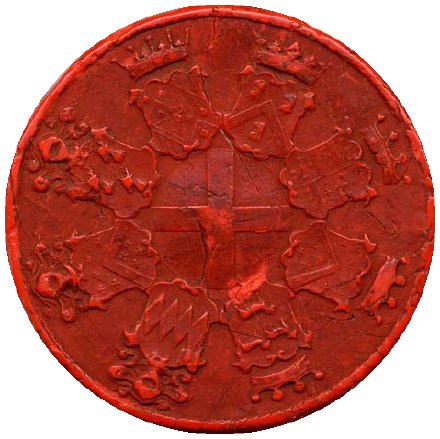
UPDATE:
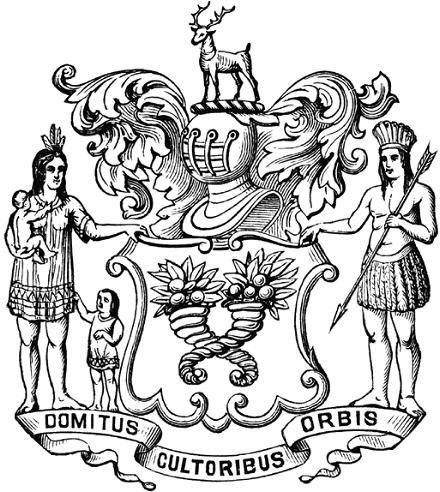
The commenter below is correct; the motto is ‘Domitus Cultoribus Orbis’ or ‘Tamed by the Husbandmen (cultivators) of the World’, as shown clearly in this alternate depiction which I have discovered.
Stauffenberg’s Arms
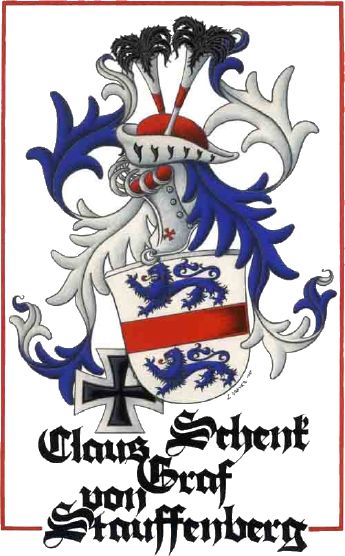
Hommage à la mémoire de Claus Philip Maria Schenk comte von Stauffenberg, homme d’honneur et de foi, qui participa à l’attentat contre Hitler, le 20 juillet 1944 dans le cadre du plan ‘Walkyrie’ destiné à renverser le régime nazi.
The arms of Claus Philipp Maria Schenk Count von Stauffenberg, beautifully depicted by the French heraldic artist Laurent Granier.

Previously: Long Live Our Holy Germany!
Monarchs and Presidents in Islam
National Review, Nov 21, 1986
by Erik von Kuehnelt-Leddihn
IN THE Islamic world’s relations with Israel, the hard-liners are the various Arab and non-Arab republics. When there is any sign of softness, it comes, almost always, from one of the monarchies. (Egypt, and Egypt alone, is the exception.) It thus did not come as a great surprise that King Hassan II of Morocco agreed to meet with the then Israeli prime minister, Shimon Peres, this summer.
While individual monarchs historically may have been capricious or cruel, monarch as an institution is inclined to be generous: Montesquieu has told us that while the driving element in republics is virtue, in monarchies it is clemency. And, indeed, the Islamic monarchs of old were infinitely more tolerant than their modern republican successors. They traveled extensively, and many had a cosmopolitan outlook. Some had relatives abroad. When King Hassan II of morocco writes to members of Europe’s royal families, he addresses them as “cher cousin” or “chere cousine,” since he is a descendant of Mohammed’s daughter Fatima, as by now are all the Christian royal families. (Many centuries ago, a Moroccan prince was taken prisoner by the Castilians and converted in captivity. After his release he married into a princely family, and over the centuries his bloodline has spread into countless aristocratic and royal families.) In chooing their administrators, officers, diplomats, bankers, and doctors, Islam’s monarchs looked for able men regardless of religion, never caring whether their choices were popular or not.
It is true that local slaughters of Christians took place in various parts of the Turkish Empire, but things got really bad only when the enlightened, highly nationalistic Young Turks appeared on the scene. Their political organization was called “Unity and Progress,” by which they meant ethnic uniformity and modern methods. It was they who were behind the big Armenian massacres during World War I. The Turkish sultans, by contrast, frequently gave preferment to Christians (and sometimes Jews) in high positions. The Phanariotic Greeks, so called after the Lighthouse Quarter of Constantinople in which most of them lived, acted as trusted administrators; the governors of the Rumanian-speaking provinces, for instance, were taken from their families.
Very typical is the story of a family known to me. Originally called Black, they were Scots and good Catholics who emigrated after the fall of the Stuarts and settled in France, where they Gallicized their name. There are still Blacques in France, but one branch of the family emigrated to Turkey, where its scions made a splendid career without changing either their name or their religion. One of them, Edward Blacque-Bey, became the last Turkish imperial ambassador in Washington. (His sons, too, made diplomatic careers. One married an American, and his son, having graduated from Harvard, became a colonel in the U.S. Marines and later an American diplomat.) Edward Blacque-Bey wore a fez and was a loyal subject of the sultan, under whom Constantinople became an international metropolis. All this ended with the republic under Ataturk.
Similar conditions existed in the kingdom of Egypt before Nagib and Nasser. Forty per cent of the administrators and civil servants were Coptic Christians, who considered themselves the genuine descendants of the Old Egyptians. Before 1952 Cairo was an eastern Paris, where Christians and Jews played an important role–socially, commercially, politically, Arab nationalism put an end to all this, not only in Cairo, but also in Alexandria, which is so well described in Lawrence Durrell’s Alexandria Quartet. In Iran–a non-Arab state–the old monarcy under the Kajar dynasty and the more recent one under the Pahlavis were notably tolerant. Non-Muslims (such as the still-surviving Zoroastrians) could make all sorts of careers, and the country’s political orientation was Western. The window to the West remains open in the Islamic monarchies of today–in Morocco, in Saudi Arabia, in Oman, and even in Malaysia.
MONARCHIES HAVE the advantage that, although they might be oppressive toward the political ambitions of their subjects, they are never totalitarian. To my knowledge there is no Jewish community left in Algeria, but there still is a small one in Morocco. Variety is the keynote of monarchies, and with it goes internationalism. In 1910 only two sovereign nations in Christian Europe had truly native dynasties: Serbia and Montenegor. (Peter III was the last genuine Romanov; the Hohenzollerns were not Prussians but Swabians; and so forth.) These dynasties could often follow unpopular policies, both domestic and foreign. Popular policies are not always good for the country, and the courage required to stick to an unpopular good policy is immensely rare among politicians in democracies. They crave popularity and want, above all, to be re-elected. King Hassan II might be trembling lest he be assassinated by fanatics, but he pursues policies that he considers to be right. He certainly is not guided by Sir Henry Campbell-Bannerman’s idiotic dictum, “Self-government is better than good government,” which is roughly equivalent to saying that self-treatment in case of illness is better than treatment by a qualified physician.
New York in Philately

Wandering around the merry old world wide web I stumbled upon these stamps, which I bring to you for your own enjoyment. Above we have the Great Metropolis itself, the island of Manhattan in its swankier days. Below we have a view of the Crown of the Hudson, West Point, with the beautiful Cadet Chapel designed by that American Master, Bertram Grosvenor Goodhue himself, presiding over the campus of the United States Military Academy.
The postage stamp was once a thing of beauty and composition, but it’s heartening to see that some still design beautiful stamps. Just examine Elliott Banfield’s stamp of General Washington, based upon the staute in Union Square. Mr. Banfield believes that the decline in the design of postage stamps is due to a “moral void” most readily shown when the Postal Service unveiled its famous ‘Elvis Stamp’ a few years back.
“Elvis was important in the popular culture, yes,” writes Mr. Banfield. “But how important is the pop culture? Important only to those who can’t see anything higher or better. It’s scary to think that people like that are in charge of public policy. But they are, and the Elvis stamp proves it.”
Hear! Hear!

An irrelevant stamp, after the jump.
Search
Instagram: @andcusack
Click here for my Instagram photos.Most Recent Posts
- Burns Tower April 19, 2024
- Patrick in Parliament March 18, 2024
- Articles of Note: 13 March 2024 March 13, 2024
- Cambridge March 9, 2024
- Taken on Trust March 4, 2024
Most Recent Comments
Book Wishlist
Monthly Archives
Categories


